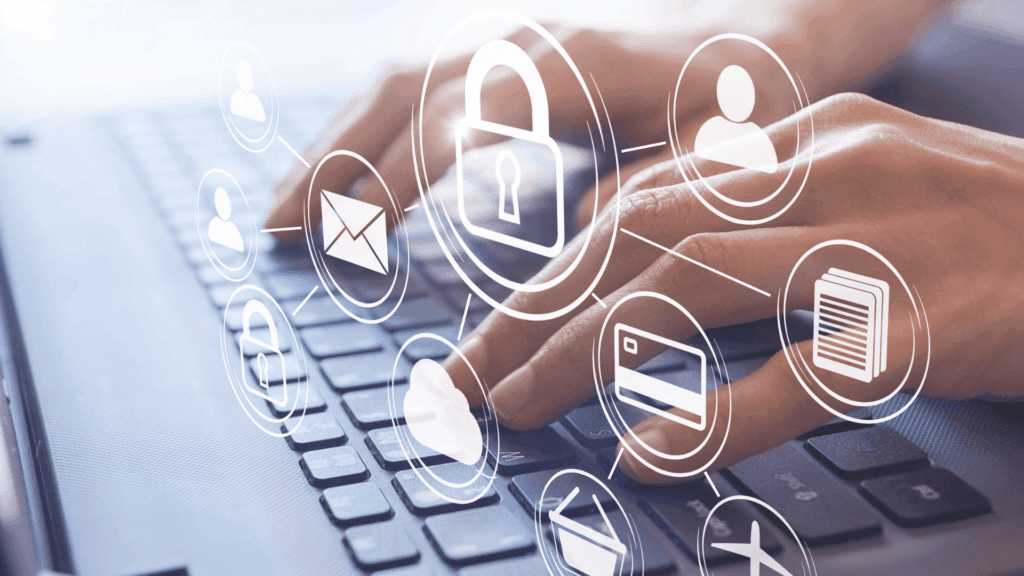

In today’s digital landscape, cybersecurity has become one of the most pressing concerns for businesses and individuals alike. As cyber threats continue to evolve in complexity and scale, traditional security measures are often not enough to protect sensitive data and systems. This is where Artificial Intelligence (AI) steps in, offering powerful tools to tackle these threats in real-time and even predict potential attacks using risk modeling.
AI has already shown immense promise in enhancing cybersecurity, automating threat detection, and improving overall system resilience. But as we rely more on AI for protection, a question arises: when does AI become indispensable for cybersecurity?
Let’s get deeper into how AI is transforming the cybersecurity landscape and explore the critical moments when AI becomes an essential tool for protecting our digital world.
How AI Strengthens Cybersecurity
AI plays a crucial role in modern cybersecurity strategies. Here’s a breakdown of the ways it enhances security:
- Real-Time Threat Detection
Traditional cybersecurity systems often rely on signature-based detection methods, where known threats are identified based on patterns or signatures. However, these systems can be slow to recognize new or evolving threats. AI, on the other hand, uses machine learning algorithms to detect anomalies and unusual behavior in real-time. By continuously monitoring system activity, AI can instantly flag potential security breaches, even if the threat is not yet recognized. - Predictive Risk Modeling
AI also helps predict future threats by analyzing vast amounts of data and identifying patterns that humans might miss. Predictive risk modeling is a technique where AI analyzes historical attack data, network traffic, and external threat indicators to forecast potential vulnerabilities. This allows organizations to proactively address potential issues before they become full-blown security threats. - Automated Response and Mitigation
Once a threat is detected, AI can quickly initiate automated responses to mitigate the risk. Whether it’s isolating infected devices, shutting down specific parts of the network, or applying patches to vulnerable systems, AI-driven security systems can respond faster than human teams, reducing the window of exposure and damage from cyberattacks. - Enhanced Phishing Detection
Phishing attacks are among the most common cybersecurity threats, and they can be difficult to spot using traditional methods. AI-powered systems can analyze incoming emails, URLs, and attachments to detect phishing attempts with high accuracy. These systems continuously learn and adapt, making them increasingly effective at identifying new phishing tactics and techniques.
The Rising Dependence on AI for Cybersecurity
While AI is already providing substantial benefits to cybersecurity efforts, the growing sophistication of cyber threats makes it clear that AI will become indispensable in the future. Here’s why:
- Scale and Volume of Data
Cybersecurity threats are no longer isolated incidents but widespread, frequent occurrences. The sheer volume of data that organizations need to monitor for potential threats can overwhelm traditional security systems. AI, with its ability to process and analyze vast amounts of data quickly and efficiently, becomes essential for identifying and responding to threats at scale. - Evolving Threat Landscape
Hackers and cybercriminals are continually evolving their tactics to bypass traditional security measures. AI’s ability to learn from new data and adapt to emerging threats gives it a distinct advantage. As attackers refine their techniques, AI can rapidly adjust its models and detection algorithms to keep up, providing a level of adaptability that human-driven security teams struggle to achieve. - Automation of Security Operations
With the growing complexity of cyberattacks, manual intervention is often no longer enough to keep up with the scale of potential threats. AI can automate many security operations, such as vulnerability scanning, patch management, and incident response. This not only improves the speed of threat detection and response but also reduces the burden on cybersecurity teams, allowing them to focus on more strategic tasks. - Preventing Human Error
Humans, while critical to cybersecurity, are often prone to error, which can lead to overlooked vulnerabilities or delayed responses. AI, with its ability to learn and execute tasks with precision, can eliminate the risk of human mistakes that may otherwise expose networks and systems to attack. For instance, AI can automatically update security software, apply patches, and monitor systems 24/7, without the risk of forgetting or misconfiguring something.
When Does AI Become Indispensable?
As the cybersecurity landscape grows more complex, the reliance on AI becomes not just a choice, but a necessity. Here are key scenarios where AI becomes indispensable:
- When Cyberattacks Become More Sophisticated
As cybercriminals become more sophisticated, AI-driven systems are necessary to detect complex and novel attack methods. When attacks move beyond simple malware or phishing to include advanced persistent threats (APTs), zero-day exploits, or deep fakes, AI is essential to detect the subtle signs of these sophisticated attacks. - When Real-Time Response Is Critical
In industries such as healthcare, finance, and government, even a few seconds of delay in response to a cyberattack can lead to catastrophic consequences. AI enables real-time threat detection and automated mitigation that reduces the response time dramatically, preventing significant damage from cyberattacks. - When Human Resources Are Limited
Cybersecurity teams are often stretched thin, especially in smaller organizations. When there aren’t enough cybersecurity professionals to monitor and protect against a constant stream of threats, AI systems step in to provide 24/7 monitoring and immediate response. AI helps fill in the gaps, ensuring that threats are detected and mitigated even during off-hours or when security personnel are unavailable.
Conclusion: Embracing the Future of AI in Cybersecurity
AI is transforming cybersecurity in ways that were once unimaginable. With its ability to predict attacks, detect threats in real-time, and automate responses, AI is already making a significant impact in securing digital environments. As cyber threats become more sophisticated and pervasive, AI will become indispensable in ensuring that businesses and individuals remain protected.
The future of cybersecurity will undoubtedly rely on AI-driven solutions, offering the speed, accuracy, and scalability needed to keep up with the evolving threat landscape. Those who embrace AI now will be better prepared for the cybersecurity challenges of tomorrow.
FAQs
Q1: How does AI detect cyberattacks in real-time?
AI detects cyberattacks in real-time by using machine learning algorithms to analyze system behavior, flagging anomalies that might indicate a potential security threat. It can also compare incoming data against known attack patterns and use predictive modeling to anticipate future attacks.
Q2: Why is AI important for predicting cyberattacks?
AI is essential for predicting cyberattacks because it can analyze vast amounts of data from various sources and identify patterns that suggest potential vulnerabilities. By understanding these patterns, AI can forecast where attacks may occur and help organizations take preventive measures.
Q3: Can AI completely replace human cybersecurity teams?
No, AI cannot completely replace human cybersecurity teams. While AI is excellent at detecting and responding to threats in real-time, human expertise is still needed to interpret complex security incidents, create strategic defenses, and ensure that AI systems are functioning correctly. AI and human teams work together to create the most effective cybersecurity strategies.



